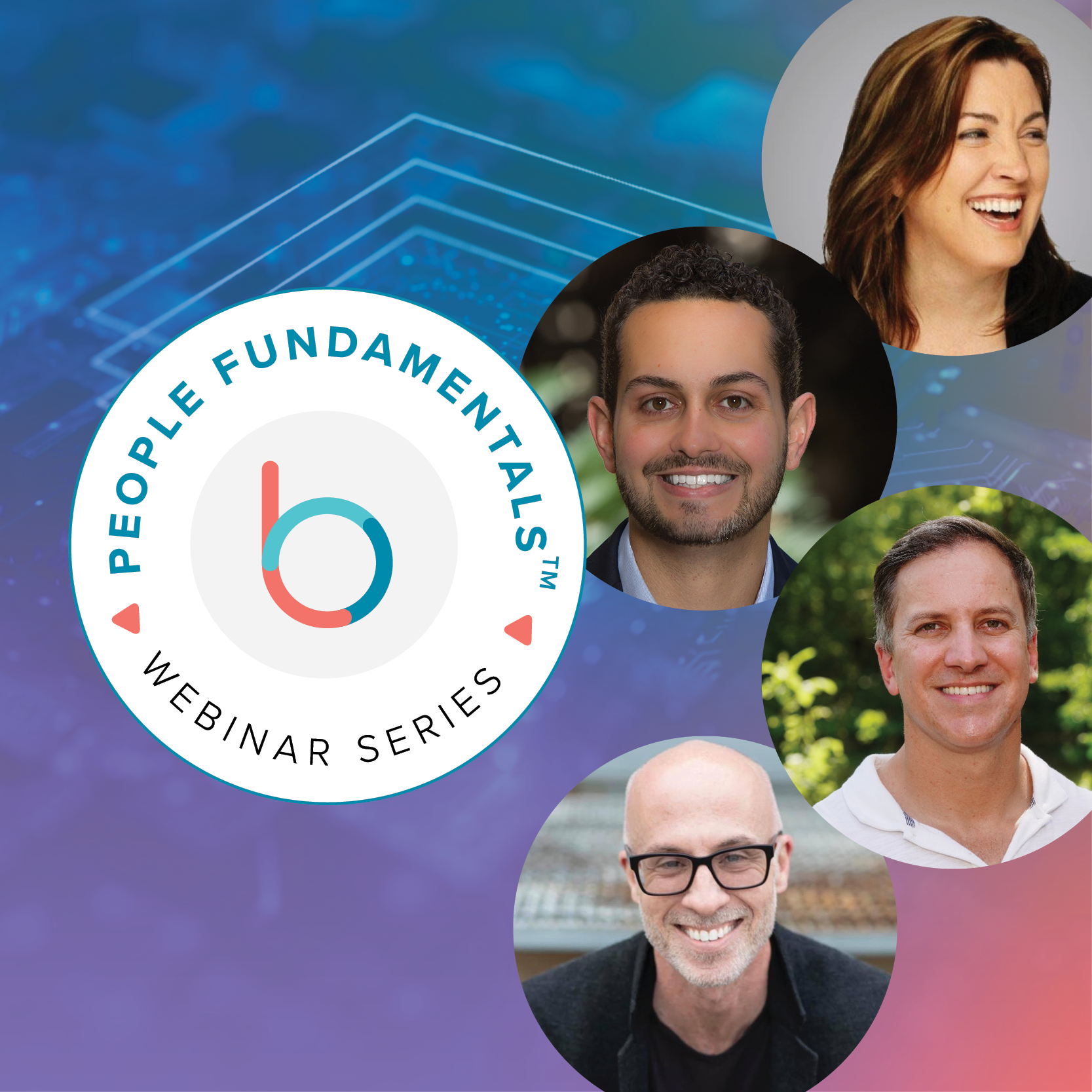For a survey to provide the insights you want when it comes to measuring employee engagement, you must be able to gauge qualitative traits like emotion. As useful and efficient as Likert scale questions are to your feedback and engagement strategy, they cannot capture nuanced data like feelings. That’s why open-ended questions are so essential to trusted engagement surveys.
But saying open-ended questions are vital to your employee surveys and effectively using them are two very different things. For that reason, we’re going to take a closer look at them, covering topics like:
- How to use open-ended questions
- Best practices in choosing your questions
- Example questions for you to use
Integrating open-ended employee engagement survey questions breathes new life into your overall strategy. Use these insights to inform your approach and start realizing the significant benefits of improved engagement levels.
Using Open-Ended Questions
Until recently, Human Resources had to invest significant time and effort to analyze the responses from just a single open-ended survey question. Without technology to streamline the process, manually going through every response and trying to quantify patently qualitative data consumed much time, effort, and resources.

Thankfully, HR technology has come a long way in a short amount of time. Today, HR leaders can rely on tools like natural language processing (NLP) and machine learning to quickly and accurately process open-ended questions. By relying on such tools to measure employee engagement, HR not only frees more time from their busy schedule, but also minimizes errors that typically plague processing the answers by hand. Of course, this makes it critical that your organization chooses a feedback solution that integrates technologies like NLP and machine learning.
Tips on Choosing Your Questions
Aside from choosing capable software, there are a few other best practices that will help you make the most of open-ended questions for your employee engagement surveys.

- Using too much of a good thing – While open-ended questions are uniquely capable of providing insights into emotion and other qualitative data, they’re most effective in limited use. As a rule of thumb, it’s best to use one open-ended question for every 15 Likert scale questions on your surveys.
- Use well-worded questions – Your open-ended questions don’t have to be Shakespearian in eloquence. However, rooting them in academic research is essential. You want the questions to be well-worded and targeted, focusing on a particular category or issue you want to explore.
- Mind your culture & environment – It’s usually best to word the questions according to your culture and office vibe. For example, if you’re a tech startup with a loose and casual work environment, then there’s nothing wrong with being a bit playful with the questions. Just make sure they still get to the point, and the wording doesn’t dilute the underlying meaning and importance.
- Choose shorter-term subjects – Open-ended questions aren’t as useful in tracking trends over time because of their qualitative nature. Instead, they’re best used for gathering people data and ideas on particular subjects or time-sensitive topics. Likert scale questions are the better option for measuring trends due to their highly quantitative nature.
- Measure sentiment – Building from the previous point, open-ended questions are well-suited for sentiment analysis. This is where NLP and machine learning are particularly helpful, able to reveal actionable insights from text-based responses over a specific policy, procedure, or pain point. Sentiment analysis uncovers the “why” behind engagement scores, employee satisfaction, and turnover. With 75% of the causes behind attrition being avoidable, sentiment analysis is critical to retaining key talent and minimizing turnover costs.
- Providing anonymity is key – There’s no point in using open-ended questions – or any employee survey questions, for that matter – if the responses aren’t genuine. Providing and maintaining anonymity is vital in that regard. If employees feel as if their honest feedback will jeopardize their position or even career, they won’t be open in their answers. Naturally, this defeats the purpose of engagement surveys in the first, preventing your leaders from having the genuine feedback they need to make important decisions. Employees are 75% more likely to participate if you guarantee anonymity, so it obviously plays a critical role in your employee engagement surveys.
Five Sample Open-Ended Questions
We’ve created our Employee Engagement Framework & Templates to help you get started with your engagement surveys. They are academically researched, precisely worded surveys based on our 13 key drivers of employee engagement that any company can customize for their own purposes. As you’ll see, our templates include both Likert scale and open-ended questions to provide a ready-to-use, plug-and-play solution.
To focus specifically on open-ended questions, however, we also wanted to go through five examples that you can either use as-is or as a guide in developing your own questions.
1. What do you enjoy most/least about your company?
You can word this question in different ways, alternatively asking about strengths & weaknesses. But what you’re zooming in on are the highs and lows of the employee experience. The responses could focus on culture, corporate policies, or what’s best and worst about their day-to-day experience. Be sure to break them up into two separate questions, for instance, using a “most” and “least” variant so you can see what your company excels at as well as what you need to improve.
2. What can the company do better to make things better?
This question works in conjunction with the previous one, drilling further down into possible pain points and red flags. Your employees aren’t just telling you what they dislike about the company, their coworkers, benefits, or anything else but, just as importantly, what you can do to improve those areas.
3. Is there anything preventing you from doing your job well?
With this question, you’re looking for responses that reveal barriers to performance. This could include anything from staplers that jam too often to issues with individual coworkers. Remember, you can always examine the responses further with follow-up pulse surveys and polls.
4. What changes have you seen since the last survey?
As we’ve written in the past, it’s crucial that you take action on your survey results. If you don’t, then you’re defeating the entire purpose of your engagement strategy. Also, if employees don’t see action stemming from their participation, they’ll eventually lose interest and either stop taking the surveys altogether or just quickly rush through them without any thought. This question helps gauge how well you’re taking action on the feedback and if you might need to change your direction or approach.
5. How would you describe communication within your team?
This question explores collaboration and team dynamics. Responses could include employee-to-employee communication or between managers and their team members. As one of our key drivers of engagement, communication is essential for employee engagement. It drives everything from productivity and retention to company culture. But according to research, while nearly 3 out of 4 employers understand that collaboration is vital for success, almost 40% of employees say there isn’t enough collaboration in their organization.
Target the Right Areas

These are just a few examples of open-ended questions you can use with your employee engagement survey software. Whether you use a template or create your own survey questions, however, make sure you target specific areas that you want to explore within your organization and the employee experience for your employee engagement survey. Ultimately, the right questions paired with capable software and precise action plans will drive employee engagement across your organization.
Employee engagement surveys can be imperative when creating actionable plans. Through the feedback that is received via these surveys, the strategy to move forward can become very clear.
Employee engagement surveys are an excellent way to get to know your employees in a more in-depth way. Plus, surveys can always be kept on file and accessed whenever a decision is being made.
Open-ended questions are the exact opposite of a question requiring a simple yes or no answer. These questions require a detailed response with no restrictions.
Open-ended questions are especially important for surveys or other business documents, as they can provide much more in-depth answers. This data can be analyzed in a number of ways for a variety of actionable strategies.
It’s a fact that 75% of employees are more likely to respond to surveys honestly if they are allowed to do so anonymously. While the management team may be very curious to know where certain feedback comes from, it’s much more important that the feedback is genuine.
In being anonymous, employees feel that they can bring up topics that they may not feel comfortable discussing otherwise. If open-ended questions are used, then you can receive even more viable data.







